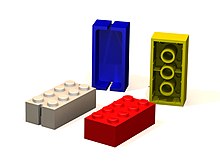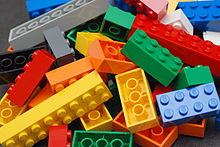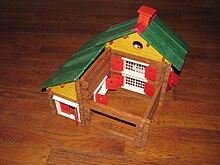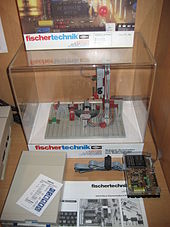

This article has multiple issues. Please help improve it or discuss these issues on the talk page. (Learn how and when to remove these template messages)
|








Aconstruction set is a standardized piece assortment allowing for the construction of various different models. Construction sets are most often marketed as toys. A popular longtime construction set toy brand is Lincoln Logs.
Construction toy play is beneficial for building social skills and building trust in others because it acts as a collaborative task where individuals have to cooperate to finish the task – building an object out of Lego, for example. The effect was found in high school students.[1]
For children specifically, children who complete models using toy building blocks have much better spatial ability than children who do not complete such models. Spatial ability also predicts completion of models.[2]
Construction toy play is also beneficial for autistic children when both individual and group play with building blocks is incorporated. Autistic children who played with building blocks were motivated to initiate social contact with children their age, able to maintain and endure contact with those children, and were also able to surpass the barriers of being withdrawn and highly structured.[3]
Red and yellow Lego building blocks, which were manufactured between 1963 and 1981, can release carcinogenic cadmium when exposed to stomach acid in amounts exceeding today's limits about 10-fold.[4][5]
Construction sets can be categorized according to their connection method and geometry:
Renowned architect Frank Lloyd Wright credited his childhood building blocks designed by Friedrich Fröbel as a major influence, and his son John Lloyd Wright invented the widely-known Lincoln Logs building set.[7] In addition to teaching architectural concepts such as modularity and load-bearing construction,[8] many architects credit construction set play as influencing their later design.[9][7][10]
Schadstoffbelastung in Legosteinen (Pollutant load in Lego bricks)
| Authority control databases: National |
|
|---|